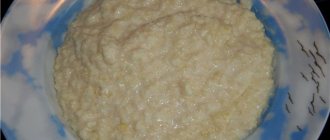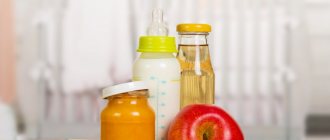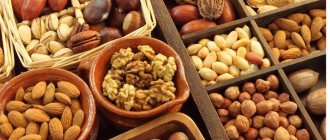Juice composition
Juice is the liquid component of fresh fruits, berries and vegetables. It is obtained by rubbing, squeezing or placing under a press. Industrially produced juices can be made from natural concentrates or purees.
The composition of juices can be monocomponent
– from one type of fruit or vegetable – and
blended
– from two or more types. The production also produces juices with pulp: they contain dietary fiber, including fiber.
The juices contain:
- natural sugars - fructose, glucose, sucrose, which are easily digestible and give the body energy; - organic acids involved in the digestion process; - minerals and trace elements - primarily potassium and iron; - vitamins - but only in freshly squeezed juices. The vitamin content in canned food is negligible. The exception is carrot, apricot, peach and plum juices, which contain provitamin A. Many types of juices are also artificially fortified with vitamin C.
Another component of juices is flavonoids. These are compounds that plants need for metabolism and are beneficial to humans. In particular, they have an antioxidant effect, that is, they help the body fight disease and aging.
How to make juices at home
The range of store-bought juices in the baby food category is amazing, so rarely do any parents actually prepare such drinks on their own, especially since you first need to offer the baby only a couple of drops, and such products should not be stored for a long time. But still, doctors strongly recommend working a little and preparing really healthy nectar for your baby.
To obtain a volume of juice suitable for your baby, there is no need to run a juicer: just grate the selected fruit or vegetable on a fine grater and squeeze the juice out of the pulp through cheesecloth. Of course, to do this you need to peel the fruit. Of course, if you share a meal with your child, then you can prepare a full glass of a healthy drink and offer a couple of drops from it to the baby.
It is obvious that natural juice is an essential product in the diet of a healthy person. When transferring the baby to an adult menu, you cannot refuse such drinks, but they should be introduced very carefully and carefully, not forgetting the danger of allergies and intestinal irritation from pure nectar.
To be sure of the safety of the proposed juice, prepare it yourself, and also dilute it with water in equal parts at first to protect the little miracle’s body from the active influence of the healthy drink.
When to include in the diet
At the end of the last century, juices were introduced into the diet of infants as first complementary foods and very early - at 3-4 months. Now the opinion of pediatricians on this matter has changed.
According to the national program for optimizing the feeding of children in the first year of life, adopted in 2021, fruit juices begin to be given to babies from 8 months.
Important!
It is not advisable to give juice to babies under 8 months of age: the child gets all the healthy nutritional components that the juice contains from fruit puree. Sweet juice quenches thirst worse than water. But after trying a delicious drink, the baby may refuse unsweetened cereals and vegetables.
Where to begin
Regarding the question of where to start complementary feeding, doctors' opinions also differ. They offer kefir, vegetables, and cereals. And some pediatricians still adhere to the old scheme, when they started giving fruit juice to the baby with one drop per month. So which complementary foods should be introduced first to infants?
- Vegetables as a first unfamiliar food have both advantages and disadvantages. You can choose fruits with a rich taste so as not to add salt, much less sugar, to them. These are pumpkin, carrots, zucchini, cauliflower and broccoli. It is only important to remember about the possibility of allergies and give the puree little by little. If the baby's stool immediately changes - it becomes green or liquid, this is a signal that it is too early to introduce vegetables.
- It is not recommended to introduce fruits first, as they are sweet, and after such fruits the baby may spit out unsweetened vegetables. For the same reason, porridge is usually shifted.
- However, cereal complementary foods are given to infants first if the baby is not gaining weight well. When the baby gets used to a certain type of porridge, you can choose adapted options for babies with fruit, which will make it easier to introduce such fruits into the diet. This solution will be especially useful in winter, when there are no seasonal fruits.
- The turn of meat and fermented milk products comes after 8 months, although there is an opinion that kefir can be given first so that it contributes to the rapid formation of intestinal microflora.
How much and what juices to give
The first ones the baby is given to try are monojuices without pulp - apple, pear. You should start introducing juice into your baby’s diet with a standard dose - drink a teaspoon on the first day and watch the reaction. If there are no rashes or stool disturbances, then the next day you can give more and gradually increase the daily dose to 60 ml.
According to this scheme, you need to introduce each new type of juice. From 9 months to one year, a child can drink from 80 to 100 ml of juice per day.
After clarified apple and pear juice, you can give these same types of juices with pulp. Then add apricot, peach, plum, pumpkin and carrot juices.
At 10-11 months, the baby can be given multi-component berry and fruit juices - they contain more useful substances, since different fruits have their own set of vitamins and minerals. Also, before a child is one year old, it is worth introducing potentially allergenic types of juice, citrus and exotic fruit juices: orange, tangerine, pineapple, strawberry, tomato, grape, etc.
To give or not to give juices
Juices for infants remain a controversial component of the diet: on the one hand, they provide additional vitamins, on the other, they are a rather aggressive irritant for the intestines. Although some pediatricians recommend giving newborns vegetable juices first. Carrot or beet nectar is suitable if the baby is not allergic to red foods. In general, these drinks can significantly improve the nutritional value of your baby’s diet:
- the body’s protective functions are enhanced due to the high concentration of vitamins and microelements;
- gradual adaptation to adult food occurs;
- appetite improves.
Obviously, the concentration of nutrients in juice is much higher than in fruit pieces. This is why nectars are much more useful, especially when the baby refuses to eat certain foods. Then they can be easily replaced with juices or cocktails made from them.
If you decide whether to give such a drink or not, then, of course, you should not risk intestinal health and offer even a couple of drops of fruit or vegetable squeeze to a five-week-old baby. But from about 6 months you can try adding up to 5 ml of juice to the diet.
How to give juice to a baby
Such complementary foods should be given to infants on the same principles as any other: starting literally with a drop. But there are other features of introducing concentrated drinks:
- Juice should not be given by force. Let your child show interest in what you drink from the cup. This will be much healthier than force feeding.
- Don't give your baby store-bought drinks. Prepare half a cup yourself, let your little one try it and finish it yourself.
- Be sure to dilute the juice with water - the crumbs should not be given concentrated nectars right away, because in this form they will be dangerous for the immature intestines.
- Offer an additional drink only after feeding, otherwise your baby may refuse breast milk or formula altogether if he finds the juice sweeter.
- It is better to give nectar from a spoon: this is recommended by pediatricians who defend their opinion regarding the harm of nipples. For older kids, you can also offer a non-spillable glass.
- If you decide to give children store-bought juices, you can offer them without diluting with water. But pediatricians have different opinions regarding such drinks, despite the fact that there is a category of products that are produced by baby food factories.
- A serving of juice per day is calculated using the following formula: the number of months of the baby must be multiplied by 10 ml. For example, if your baby is already 7 months old, then the maximum portion of nectar per day should be 70 ml, no more. But, of course, you should start offering with a drop.
- Pediatricians recommend introducing apple or pear juices first.
- You should not start with a drink with pulp.
- Hold off on citrus nectars and grape juice.
How does juice absorption work in the body?
When we juice a fresh fruit or vegetable, we remove the fiber from it and get a liquid with vitamins and a very high concentration of sugar in one glass. Yes, although it is natural, it is sugar.
There is a common misconception that sugar from fruits (fructose) is healthier than regular sugar. In fact, sucrose (or the white sugar we are used to) consists of glucose and the same fructose. It is important to understand that consuming too much fructose is just as harmful to the body as consuming too much regular sugar, sometimes perhaps even more so. This is due to the peculiarities of fructose metabolism.
It should be noted that carbohydrates, namely glucose molecules, are the primary and most preferred substrate for energy in our body. So that we do not at one point be left without a source of energy, in order to always maintain a normal level of glucose in the blood, our body has a so-called carbohydrate depot - glycogen. If a person consumes more energy than he needs, and the body's carbohydrate depot is full, all the excess energy received will be stored as fat.
As for fructose, it is not used anywhere in the body in its natural form. Given that fructose can only be processed in the liver, the portion of fructose that is not converted to glucose for energy is immediately converted to fat. This leads to excessive accumulation of fat, including in the liver. For comparison: out of 120 kcal of glucose, only 1 kcal is stored as fat, and when consuming 120 kcal of fructose, 40 kcal is stored.
Read about added sugars HERE
.
How can you enrich juice?
When we drink vegetable or fruit juice, we don't get enough fiber, which promotes satiety, reduces the risk of heart disease, and lowers cholesterol levels. Additionally, freshly squeezed juices do not contain healthy fats that are essential for transporting vitamins within our bodies (such as vitamins A, D, E, and K, which are important for hormone production and bone and nervous system health). Even in smoothies, due to the heating of the blender blades, the useful mass of fiber is oxidized, so a number of useful substances are destroyed faster.
How can you rehabilitate juices, making them a complete source of useful components? Nutritionist Nagima Semchukova explains:
– If you need a quick but balanced meal, you can make a smoothie. To do this, you can mix in a blender:
- As a source of fiber, vitamins and minerals - any combination of fruits / berries / vegetables / herbs to your taste.
- As a source of fiber and slow carbohydrates - slow-cooked rolled oats / buckwheat / bean sprouts, etc.
- Sources of healthy fats include Greek yogurt/nuts/seeds/oils.
- Protein source: flax seeds / Greek yogurt / cottage cheese / peanut butter / protein powder / nuts, etc.
.
Important!
Drinking a smoothie does not replace the need to eat solid food throughout the day. In other words, don’t go to extremes and replace all meals with smoothies. Your teeth should work too.
Read about whether you can lose weight on a diet of juices and smoothies HERE
.











